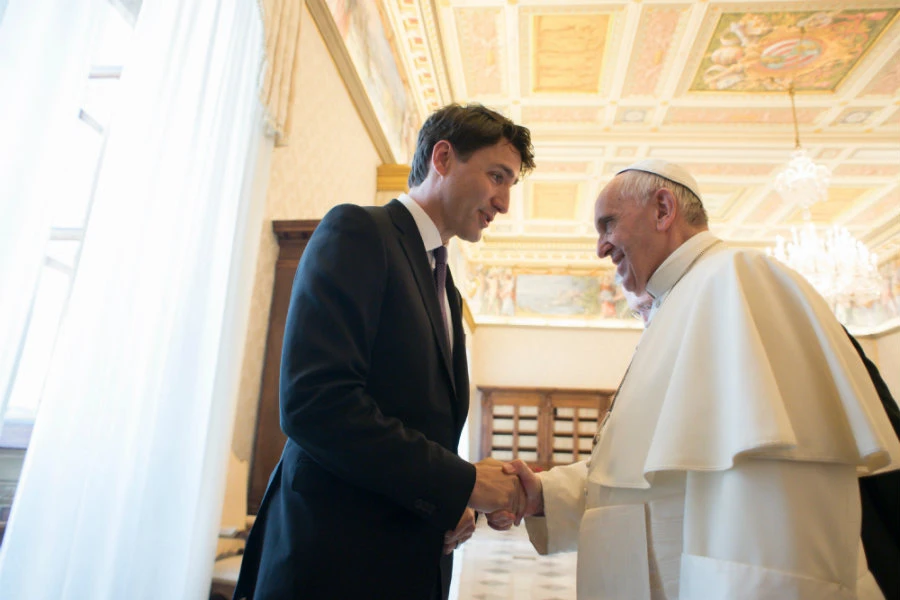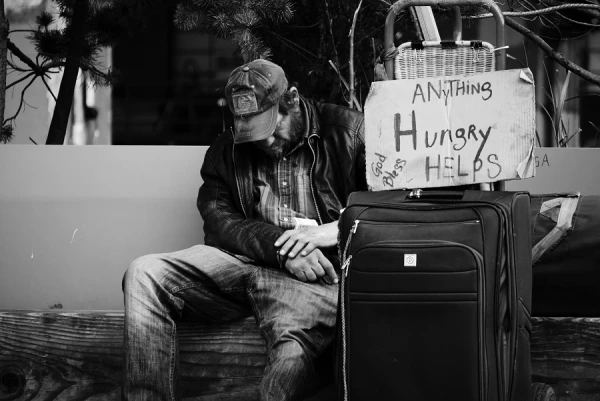
Vatican City, May 29, 2017 / 10:40 am (CNA/EWTN News).- Pope Francis met with Canadian Prime Minister Justin Trudeau in a private audience which focused on religious freedom as well as reconciliation with native people of Canada.
According to a brief May 29 communique from the Vatican, Pope Francis and Prime Minister Trudeau conversed on the topics of integration and reconciliation with indigenous people, as well as religious liberty and current ethical issues.
In their 36-minute meeting which the Vatican described as “cordial,” they touched on the positive bilateral relations between the Holy See and Canada, “along with the contribution of the Catholic Church to the social life of the country.”
Afterward “in the light of the results of the recent G7 summit, attention turned to various matters of an international nature, with special attention to the Middle East and areas of conflict,” the communique stated.
During the visit, Trudeau extended an invitation to Pope Francis to visit the country of Canada, during which time he could bring the Church’s apology for harm done to indigenous people in Canada in the mid-19th through 20th centuries when 150,000 children from native tribes were forced to undergo “enculturation” to the state through attendance at residential schools.
Some 6,000 children died in the schools and though they were state-owned, a number were managed by Catholics. The Truth and Reconciliation Commission, which ran from 2008-2015, called for action on 94 points, one of which was an apology from the Catholic Church.
In 2009, Benedict XVI did apologize for the Church’s participation in the system during a meeting with the head of the Canadian National Assembly, Phil Fontaine, showing “his pain and anguish caused by the deplorable conduct of some members of the Church,” adding that “acts of abuse can never be tolerated by society.”
The Prime Minister’s spokesman, Cameron Ahmad, said Trudeau’s main agenda for the conversation with Francis was reiterating the open invitation to the Pope to come to Canada and for “reconciliation” with the indigenous communities on this point.
Ahmad also said that other important topics for Trudeau included the climate, religious and ethnic diversity – such as interreligious dialogue – and immigration.
At the end of the meeting, the Pope gave Trudeau a medallion symbolizing forgiveness, joy and mutual acceptance. It also references the scripture passage from Matthew 5:7, “Blessed are the merciful, for they will be shown mercy.”
Francis also gave him a copy of his environmental encyclical Laudato Si, as well as copies of his 2015 Apostolic Exhortation on the family “Amoris Laetitia” and his 2013 exhortation “Evangelii Gaudium.”
Along with the three customary documents, the Pope also gave the prime minister a copy of his message for the 2017 World Day of Peace, which he signed, just like the one he gave to U.S. President Donald Trump during their meeting last week.
For his part, Trudeau gifted Francis a copy of “Relations de Jesuits du Canada,” a rare 6-volume edition that documents the Jesuits’ reports on Canadian territory, and a Jesuit vocabulary in a special edition.
The meeting was not Trudeau’s first visit to the Vatican. A Catholic, he met St. John Paul II in 1980 during the papal meeting of his father, former Canadian Prime Minister Pierre Trudeau with the pope.
Afterward, Trudeau met with Secretary of State Cardinal Pietro Parolin and Secretary for Relations with States Archbishop Paul Richard Gallagher.
Absent from Trudeau’s agenda for the audience were any topics related to life-issues, particularly that of euthanasia. Assisted suicide was legalized by the federal government in Canada on June 17, 2016. It now falls to the local provinces to reform the medical system to be in conformity with the new laws.
Canadian bishops from the provinces of Ontario and Quebec met with Pope Francis recently for their ad limina visits in April and the beginning of May. During the meetings the bishops all expressed concerns regarding the threat to freedom of conscience in relation to euthanasia’s legalization.
 […]
[…]







Life is a precious gift.